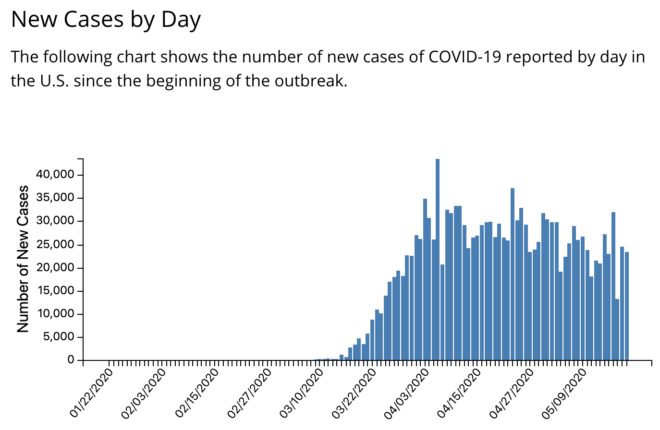Current Statistics for the Restaurant Industry

Before the pandemic, restaurants employed approximately 10% of the entire U.S. workforce. As of today, employment in the restaurant industry has more than halved.
Prior to the coronavirus pandemic, there were some 15.5 million U.S. restaurant and foodservice workers, of which drinking and eating places employed about 12 million. At the peak of the crisis last month, two in three workers had lost their job at least temporarily. As of the end of April, the National Restaurant Association estimated eight million industry job losses.
Sales at restaurants declined 51% during the first four months of the year, according to the U.S. Census Bureau, roughly matching the 55% nationwide same-store sales decline in April. Depending on their specific location, sales at various restaurant groups have declined from -26% to -55% to -61% to as low as -89%.
Prior to COVID-19, there were over 500,000 restaurants operating across the country. Steve Hafner, CEO of restaurant reservation app OpenTable, predicts that one quarter of all U.S. restaurants will permanently close. A survey of restaurant owners by the James Beard Foundation found that 80% were worried their businesses won’t survive the crisis. As of yesterday, OpenTable reservations and walk-in customers at restaurants were down 93% compared to last year.
Restrictions on maximum capacity at reopened restaurants will further dampen the recovery. Caps on simultaneous patronage in most states range from 25% to 75% of the building’s listed capacity. U.S. restaurant owners note that the industry’s thin margins of single digit percentages mean that social distancing guidelines will make their businesses unprofitable indefinitely. According to a May 3 poll conducted by researchers at The University of Maryland, only 22% of U.S. residents feel comfortable eating out at a sit-down restaurant.

Source: U.S. Centers for Disease Control and Prevention
The worst days for restaurant owners seem to have passed. Governors in 36 states currently allow some form of restaurant sit-down dining. In addition to capacity limits, some only allow al fresco dining. In Florida, Georgia, Texas, and South Carolina, all of which have allowed restaurant dining rooms to reopen for more than two weeks, OpenTable reservations remain over 60% lower than 2019 levels.
Capacity limits are not unique to restaurants. Movie theaters and malls in Texas are capped at 25%. Even Facebook disclosed today that it will limit capacity at its offices to 25%. Even in the sparsely populated state of Montana, casino attendance is capped at 50%.
According to the CDC, 1.5 million U.S. residents have been diagnosed with COVID-19, and 90,000 people have died from the disease to date. “Preparing my restaurants to reopen during a pandemic a tad intimidating,” says restaurateur Taneea Yarborough. “You are responsible for every employee and customer’s health. I don’t take that lightly.” Another restaurant owner agrees, “I would rather live than reopen my restaurants and be dead a week later.”
Photo by Zachary Nelson on Unsplash


Leave a Reply